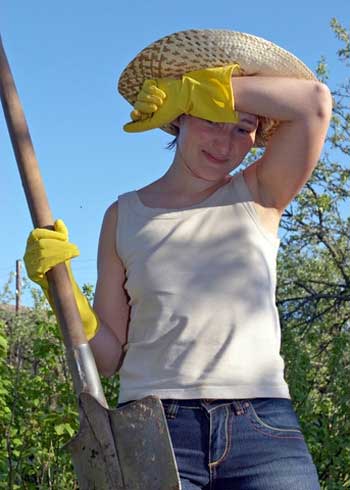Do you love landscape design but hate all the work? Here are 10 ideas for a low maintenance garden.
Whether your garden is a vertical landscape design or an urban landscape design it will require some maintenance. Low or easy maintenance gardening is what many people would like to embrace, either through necessity or preference. No garden will be a zero maintenance garden but most gardening activities have a lower input solution or alternative to consider.
A landscape designer can design a low maintenance garden, but there is no such situation where it could be a no maintenance landscape or no maintenance garden design. Even a “landscape” of non-living material such as a concrete slab requires some maintenance.
Here are some steps you can take for a low maintenance garden.
These shortcuts in the garden were initially from the RHS. (I’ve made some slight revisions). See if you agree:
1. Let go of the Lawn. No ground cover or perennial plant you can name needs to be watered, mowed, and fed as often or as much as a lawn.
2. Good soil equals good plant health.
3. Mulch, Mulch, Mulch. To conserve moisture, balance temperature shifts, minimize freezing and thawing in the winter, and suppress weeds.
4. Containers. Containers need lots of maintenance, from planting up, repotting and feeding, to watering and handling. If you do opt for planters, try to use larger ones with greater volume of compost as these should dry out less quickly.
5. Large numbers of tender plants. These require seasonal tasks such as lifting, winter wrapping, moving to a protected environment or annual propagation. Instead, look for plants that are deemed fully hardy which can be left outdoors year round.
6. Bedding plants and temporary plantings. Traditional bedding schemescan offer great color but are very seasonal and can take a lot of work, especially if you are growing your plants from seed or having to grow on plug plants in a greenhouse before planting out. Moving away from bedding to borders with permanent plantings would help eliminate this dependency. Similarly, if you’ve had success with wildflower annuals, for example, why not consider sowing a perennial meadow of native plants indigenous to your region instead to avoid annual sowing?
7. Wrong plant, wrong place. Don’t insist on growing rhododendrons on a chalky soil, or bog plants in a windswept dry garden. Equally, remember that lawn grasses are really plants suited to open conditions so lawns in shade, especially under trees, will always be difficult to keep to an acceptable quality.
8. Large specimen plants. Buying and planting semi-mature plants may seem like a quick route to an instant garden but aftercare can be more onerous. Younger plants will often establish in half the time and require less attention to watering and staking.
9. Fast-growing hedges. Choose slower growing hedging plants such as yew (Taxus baccata) or holly (Ilex aquifolium) when planting or replacing hedges.
10. Plants requiring regular or intensive pruning. This might include training fruit trees or a wall-trained wisteria. Consider shrub forms of fruit or a self-clinging climber such as climbing hydrangea instead.
Whether you are a New York City landscape designer, a weekend gardener at your summer home or a Londoner working on your allotment, these 10 steps to a lower maintenance garden will help you spend more time relaxing and enjoying your outdoor space.
For more ideas, try reading this book from a truly charming garden writer and speaker, Sydney Eddison.


